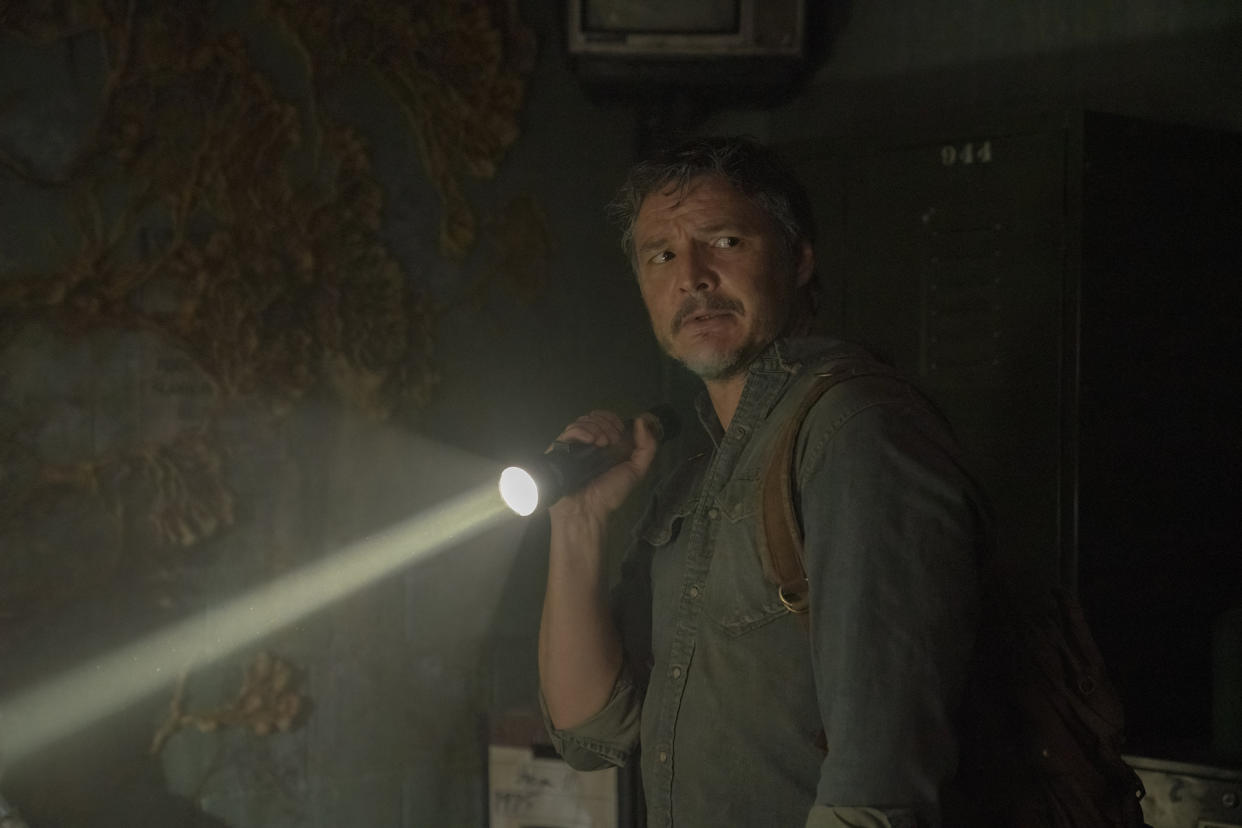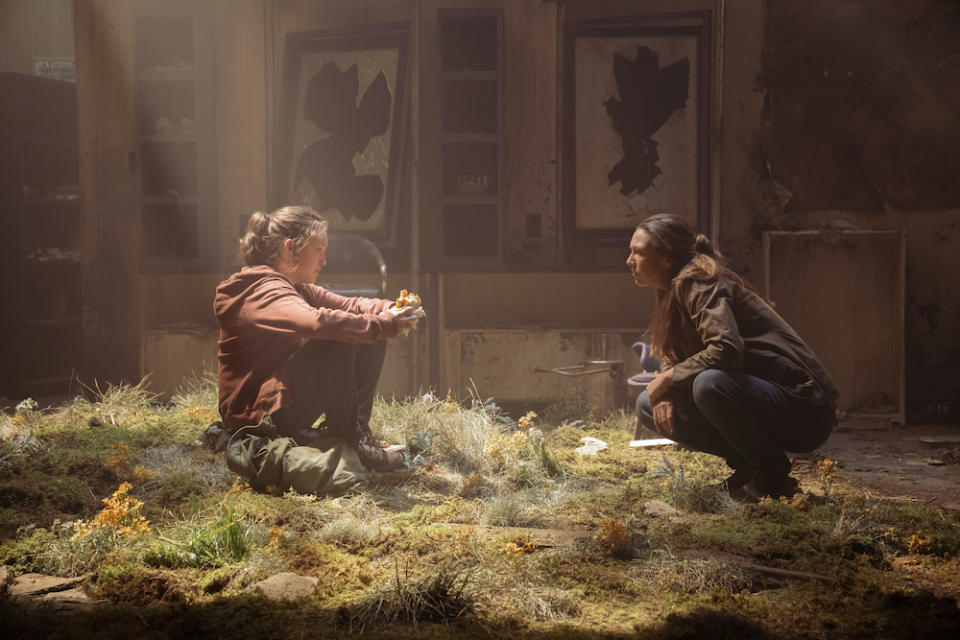HBO’s ‘The Last of Us’ Is an Astounding Survival Story — and a Major Moment in TV


Whether you’re sifting through advance reviews or reading this only after all nine episodes have aired, by now, dear reader, you’ve surely heard a number of superlatives tied to HBO’s “The Last of Us.” Someone is bound to have labeled it the “best video game adaptation ever made,” especially after the aptly snooty New Yorker story that preceded the program’s release. Another critic or influencer or what not has likely ranked it among the “best zombie shows,” or at least a timely successor to “The Walking Dead,” which just ended a few months ago. Still a different writer taking a broader view on “The Last of Us” may have called it the “best distillation of pandemic-era living,” if they hadn’t already bestowed the honorific on “Station Eleven.”
To be clear, I wouldn’t dispute any of these claims at face value. The new drama is better than every video game adaptation that comes to mind (sorry “Resident Evil”), and it is a top-tier, often terrifying zombie adventure (sorry again “Resident Evil”). It’s also attuned to the present, outlining and exploring fears related to life with COVID-19 in ways unmistakable to anyone who’s been conscious the last few years. But to relegate “The Last of Us” to any predetermined genre, any preset box, or any fixed period of time is to do a disservice to the weighty and widely applicable themes wrestled with throughout. Neil Druckmann and Craig Mazin’s series, faithfully adapted from the former’s acclaimed video game, is about survival, humanity, and life’s meaning in the fullest possible terms. That it can hone its sweeping statements into riveting personal stories only makes its impact more palpable and the viewing experience more poignant.
More from IndieWire
2023 Golden Globes Review: Jerrod Carmichael Soars, but This Ship Is Still Sinking
'Koala Man' Wastes Sarah Snook and Hugh Jackman in Hulu's Un-bear-able Superhero Spoof
…and challenging. “The Last of Us” is bound to put off a sizable portion of viewers, simply because the questions it poses are difficult and the answers given are honest. Seeing its reception will tell us a lot about where audiences stand in 2023, since entertainment of this gravity isn’t often embraced by as many people as the scale of this production demands. (The first season reportedly cost around $100 million.) But it also deserves to be heard, seen, and held onto, just as it deserves any laurels coming its way. “The Last of Us” isn’t about how to survive, but why we survive — each of us and all of us — and how it evolves that conversation makes any accompanying anguish worth enduring.
It’s also, quite simply, about Joel and Ellie. Our protagonists take a bit of time to come together in the 81-minute premiere, and both of their backstories are best appreciated how and when Mazin and Druckmann decide to share them. But what can be said about Joel is simple: The former contractor (played by “Mandalorian” star Pedro Pascal) has become a lethal, hardened version of his old self. Life after the outbreak — when a mutating fungus spread rapidly across the world’s population, taking control of its host and turning people into braindead predators — has numbed Joel into a self-centered loner. His graying hair, curt communication, and scar on his head hint at what he went through in the 20 years since civilization as we know it ended. So does the casual manner with which he wields a gun. Joel takes on various jobs to protect himself or those closest to him, but spends his nights with a bottle of whatever will knock him out ’til morning.
Then his brother Tommy (Gabriel Luna) goes missing. After making their way to a quarantine zone in Boston, Tommy soon signs up with a rebel group called the Fireflies and leaves town. Joel doesn’t approve — what’s the point of a rebellion when the whole world is doomed to die? — and he makes sure his “joiner” sibling can send messages back to Boston, proving he’s still alive. One day, those messages stop coming. Days become weeks, so Joel hatches a plan to save his brother, who most assume is already dead.
Enter Ellie. By fate or coincidence, whatever you may believe, Joel and Ellie (Bella Ramsey) are paired up out of sheer necessity. He needs help escaping, and she needs to get out of town. Why? Ellie has been bitten, only unlike everyone else on the planet, her exposure to the monsters hasn’t turned her into one. If she can make it to a proper team of scientists, the Fireflies believe they can study her DNA and develop a cure to the fungal infections. Joel doesn’t buy it (again, he’s not exactly the hopeful type), but if transporting Ellie means he can find his brother, so be it. With his partner-in-crime, Tess (Anna Torv, of “Mindhunter” fame), Joel and Ellie try to make their way forward, together: Joel, for his brother, and Ellie, for the rest of us.

Liane Hentscher / HBO
Crafted with meticulous attention to detail (and closely following the games’ story), “The Last of Us” subtly distinguishes itself from whatever presumptions viewers may bring to it. The first scene is a flashback to the ’60s, where two scientists on a talk show speculate about the gravest threat to mankind. One guest, picked up mid-statement as the episode fades in, describes an airborne pandemic similar to the one we’re still living with, but the other dismisses that scenario as something manageable. What he’s afraid of is what happens: a fungus previously unable to exist in humans finds a way to do so, and there’s no way for us to fight back — no safe space, no vaccine. Aside from setting the show’s stakes, the opener also discourages the audience from seeing “The Last of Us” as purely a pandemic allegory. It’s more than that. It’s looking beyond how we responded to COVID-19 and asking how we’d respond to a true, all-but-definitive end.
Mazin and Druckmann’s series takes a similarly defiant approach to its characters. “Joel and I are not good people,” Tess tells Ellie early on, and the validity of that statement hangs over them throughout. Sometimes our heroes fit TV’s traditional mold, making it easy to tag along as they pursue the greater good. In other moments, they fall short of those standards, into darker, morally dubious territory. (Thankfully, though, the show never shifts into full-on antihero mode). Episode 3 is an all-time great: a semi-standalone entry constructed specifically to buck expectations, but still direct, sincere, and critical to informing Joel and Ellie’s journey. Episode 5 may be even better: rich, complex, thrilling — it’s the whole package. More pseudo-one-off characters emerge as the season unfolds, and each leaves their mark not only with how they affect our leads, but with how their lives refuse to fit into neat little norms.
Much like the games challenged players to embrace difficult perspectives or unwanted tasks, “The Last of Us” challenges how we watch horror, if not action/adventure stories in general — and it does so with particular brutality. A TV show’s risk:reward ratio hasn’t been this steep since “The Leftovers,” another spin on the post-apocalyptic drama that imposes plenty of emotional turmoil before paying off with an incomparable blend of creativity and catharsis. “The Last of Us” isn’t as wild; there’s no sudden departure to The Purgatory Hotel. But it is comparably moving, ambitious, and exacting. Pascal and Ramsey are outstanding, as are Nick Offerman and Murray Bartlett in supporting roles. While screeners were largely unfinished — visual effects, sound mixing, and more were yet to be completed for a majority of the nine episodes — the pace, scope, and compositions are all impressive already. In case it’s not clear from the previous 1200 words, there is a lot to be said about and for “The Last of Us,” most of which is best discussed after everyone has had a chance to watch. So let me just leave you with this, dear reader: If you’re up for the challenge, “The Last of Us” is, too.
In time, it may not be the “best [insert qualifier here].” It may just be the best.
Grade: A
“The Last of Us” premieres Sunday, January 15 at 9 p.m. ET on HBO. New episodes of the nine-part first season will be released weekly.
Best of IndieWire
17 HBO and HBO Max Original Series to Get Excited About in 2023
The Best True Crime Streaming Now, from 'Unsolved Mysteries' to 'McMillions' to 'The Staircase'
Sign up for Indiewire's Newsletter. For the latest news, follow us on Facebook, Twitter, and Instagram.

 Yahoo News
Yahoo News 
